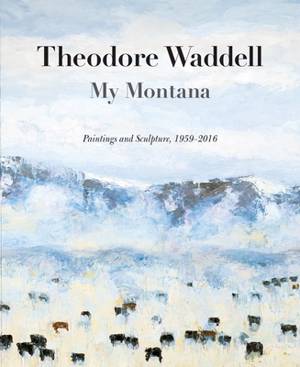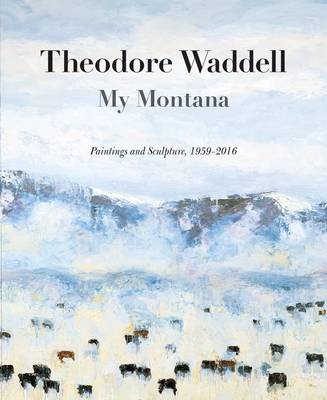
Door een staking bij bpost kan je online bestelling op dit moment iets langer onderweg zijn dan voorzien. Dringend iets nodig? Onze winkels ontvangen jou met open armen!
- Afhalen na 1 uur in een winkel met voorraad
- Gratis thuislevering in België vanaf € 30
- Ruim aanbod met 7 miljoen producten
Door een staking bij bpost kan je online bestelling op dit moment iets langer onderweg zijn dan voorzien. Dringend iets nodig? Onze winkels ontvangen jou met open armen!
- Afhalen na 1 uur in een winkel met voorraad
- Gratis thuislevering in België vanaf € 30
- Ruim aanbod met 7 miljoen producten
Zoeken
€ 39,95
+ 79 punten
Omschrijving
Born in 1941 in Billings, Montana, painter, sculptor, and rancher Theodore Waddell stands as one of the West's most celebrated contemporary artists. His late modern "landscapes with animals" couple abstract expressionist technique with creatures--Black Angus cattle, horses, and bison--that populate the high plains and mountain valleys of today's ranching West. Heavily illustrated with the artist's own work, as well as images from his personal archive, Theodore Waddell: My Montana traces Waddell's influences, ranging from the Cezannesque works of Montana rancher and teacher Isabelle Johnson to the abstract expressionism of Robert Motherwell, the expressionist figuration of Robert DeNiro Sr., and the classic western paintings of Karl Bodmer, Charles M. Russell, Frederic Remington, Thomas Moran, Joseph Henry Sharp, and Maynard Dixon. With access to Waddell's journals and letters and an extensive oral history recently completed, author Rick Newby offers unprecedented insight into Waddell's first years as an avowed artist and his period of struggle and disciplined creativity. Newby portrays Waddell's decades as a practicing rancher and the years of his success--when his sculptures and vast canvases have found homes in leading museums. Ultimately, Theodore Waddell's works are important, not simply because they bring together disparate traditions but because they stand as emotionally and sensuously resonant works of art that speak of landscapes and animals, life and death, austerity and abundance. They possess, in the words of Seattle Times critic Robin Updike, an "immense, poetic dignity." This volume also includes a gathering of essays celebrating the life and art of Theodore Waddell by the Montana curators, critics, scholars, poets, and fiction writers who have known him best. Contributors include the Honorable Pat Williams, Robyn Peterson, Bob Durden, Gordon McConnell, Mark Browning, Donna Forbes, Greg Keeler, Patrick Zentz, Scott McMillion, William Hjortsberg, Paul Zarzyski, and Brian Petersen.
Specificaties
Betrokkenen
- Auteur(s):
- Uitgeverij:
Inhoud
- Aantal bladzijden:
- 256
- Taal:
- Engels
Eigenschappen
- Productcode (EAN):
- 9780976968474
- Verschijningsdatum:
- 31/03/2017
- Uitvoering:
- Paperback
- Formaat:
- Trade paperback (VS)
- Afmetingen:
- 229 mm x 277 mm
- Gewicht:
- 1406 g

Alleen bij Standaard Boekhandel
+ 79 punten op je klantenkaart van Standaard Boekhandel
Beoordelingen
We publiceren alleen reviews die voldoen aan de voorwaarden voor reviews. Bekijk onze voorwaarden voor reviews.











